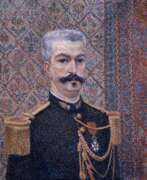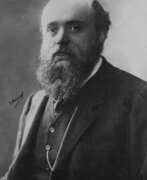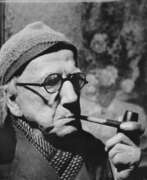Flower still life Pointillism


Yvonne Canu was a French painter and neo-impressionist who used pointillism and divisionism in her work. She studied at the Ecole des Arts Décoratifs in Paris and the Académie de la Grand Chaumiere.
Yvonne Canu's paintings were mainly landscapes and still lifes. Her works displayed a meticulous attention to detail and an emphasis on capturing the effects of light and colour. Using pointillism, she achieved a luminous quality in her paintings, with colours optically blending into one another when viewed from a distance.


Albert Dubois-Pillet was a French Neo-Impressionist painter and army officer. He played an important role in founding the Société des Artistes Indépendants and was one of the first artists to embrace Pointillism.
Albert Dubois-Pieu's paintings often depicted landscapes, seascapes and city scenes, conveying the effects of light and atmosphere with meticulous attention to detail. His use of vivid and contrasting pointillistic colours created a sense of depth, brightness and optical blending when viewed from a distance.
Dubois-Pieu was influenced by the theories of colour and light of Georges Seurat and Paul Signac, two prominent figures in the Neo-Impressionist movement. He participated in several exhibitions with these artists and other members of the movement, contributing to the dissemination and appreciation of Neo-Impressionism.


Alfred William (Willy) Finch was a ceramist and painter in the pointillist and Neo-Impressionist style. Born in Brussels to British parents, he spent most of his creative life in Finland. In 1883 he became a founding member of Les XX, a group of twenty Belgian painters, designers and sculptors, who rebelled against the prevailing artistic standards and outmoded academism. He was impressed by the works of Georges Seurat and Paul Signac and changed his own painting style from a more realistic approach into a pointillistic style. In the following years, Finch became one of the leading representatives of his style in Belgium, along with Théo van Rysselberghe. During the early 1890s Finch switched careers from painting to pottery, upon the realization that he couldn't make a living by painting. In 1897, invited by count Louis Sparre, Finch moved to Porvoo, Finland, to head the Iris ceramics factory, and influenced the development of the local Jugendstil. After the factory was closed, Finch resumed his painting career.


Georges Lemmen is a Belgian Neo-Impressionist painter, member of the XX Society. He was close to art from childhood and studied for a time at a special drawing school. In the early 1880s, as a teenager, he was introduced to the work of Edgar Degas and Henri Toulouse-Lautrec, which had a great influence on him.
Georges Lemmen's paintings were marked by the use of fine, clean strokes and a vivid colour palette. He used the technique of divisionism, applying strokes of pure colour in close proximity to one another to create a sense of optical blending and luminescence.
Lemmen's subject matter was varied: landscapes, portraits, interiors and scenes of everyday life. He often portrayed leisurely pursuits and the beauty of nature, infusing his work with a sense of tranquillity and harmony.
Until 1895, he abandoned pointillism to contribute to the development of Belgian Art Nouveau. He created many book illustrations, posters, ceramics, carpets, drawings, pastels and gouaches in this style.


George Morren or Georges Morren was a Belgian painter, sculptor, Impressionist and engraver. The painter and friend of the family Emile Claus who taught him and his brothers several times a week served as his first mentor. He began working in an Impressionist style. In the summer of 1892, eschewing the shortened painting process which was associated with Neo-Impressionism, he began to work in a more spontaneous manner, creating more space for emotions. He became one of the most eager admirers of the French Impressionists. After three years in Paris he returned to Antwerp where he participated in several avant-garde groups. Morren created light-flooded paintings, exhibited at the fairs La Libre Esthétique in Brussels, the 'Vie et Lumière', and at numerous international exhibitions. Towards 1913, he entered a new creative period. The colors in his new works were more subdued. He used grated rough pigment and pastels. Morren remained faithful to impressionist ideals and did not participate in new trends, such as Cubism or Expressionism. He dealt with the scenes of everyday life, interiors, still lifes, landscapes and portraits. His palette became darker and his paintings developed a solemnity and clarity of expression.


Fernand Verhaegen was a Belgian painter and etcher. He took courses at the Académie Royale des Beaux-Arts from 1900 to 1906. After graduation, he exhibited his works in Belgium and abroad. His style gradually evolved from impressionism and Belgian luminism to a synthetic form of capturing reality. In his later years, he came back to a personal form of impressionism. Verhaegen specialized in painting Walloon folklore. Verhaegen's works are in many museums of Belgium and abroad.





